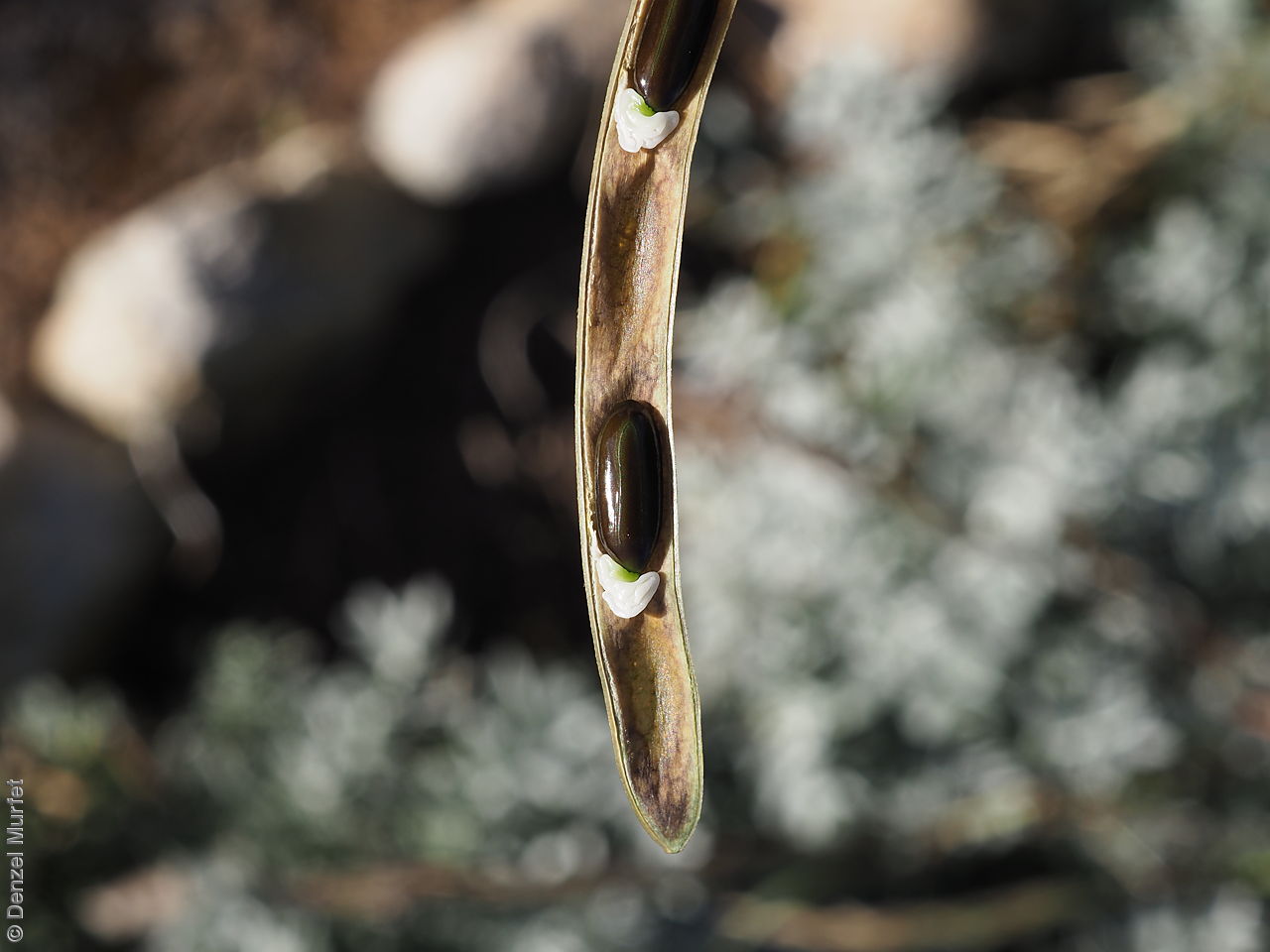


















Botanical art
Prior names
Acacia visciflua
Acacia viscosa
Mimosa dodonaeifolia
Common names
Sticky Wattle
Hop-bush Wattle
Etymology
Acacia from the Greek 'akakia' and derived from 'ake' or 'akis' meaning a sharp point or thorn and 'akazo' meaning to sharpen. Dioscorides, the Greek physician and botanist used the word in the 1st century AD for the Egyptian thorn tree, Acacia arabica. Dodonaeifolia from 'dodonaea' genus named after Dodonaeus, the Latinised name of Rembert Dodoens (1517-1588), a Belgian botanist and Latin 'folium' meaning leaf, having leaves like Dodonaea.
Distribution and status
Endemic to South Australia and found mainly on southern Eyre Peninsula and southern Mt Lofty Ranges, with minor occurrences on southern Yorke Peninsula, Kangaroo Island and the South-East. Grows in woodland and open forest vegetation in hard acidic, yellow duplex, red shallow porous loamy, sandy alkaline yellow duplex soils. Native. Uncommon in South Australia.
Herbarium regions: Eyre Peninsula, Murray, Yorke Peninsula, Southern Lofty, Kangaroo Island, South Eastern, Green Adelaide
NRM regions: Adelaide and Mount Lofty Ranges, Eyre Peninsula, Kangaroo Island, Northern and Yorke, South Australian Murray-Darling Basin, South East
AVH map: SA distribution map (external link)
Plant description
Tall, viscid shrubs or small trees to 6 m high, with short, thin trunks and long ascending branches, sometimes covered with a blackish sooty substance. Leaves lanceolate or linear-lanceolate to 10 cm long and 10 mm wide, flat, punctate, quite viscid and sticky when young, becoming less viscid when mature and with a prominent central vein. Inflorescences axillary, mostly twin, sometimes on a very short common peduncle with globular, bright yellow flower-heads. Flowering between July and November. Fruits are light brown, linear, straight or curved pods to 10 cm long and 6 mm wide, raised over the seeds. Seeds are hard, dark brown, oblong to ellipsoid to 6 mm and 3.5 mm wide. Seed embryo type is investing.
Seed collection and propagation
Collect seeds between November and January. Collect mature pods that are turning brown, with hard, dark seeds inside. Place the pods in a tray and leave to dry for 1-2 weeks or until the pods begin to split. Then rub the dried pods to dislodge the seeds. Use a sieve to separate any unwanted material. Store the seeds with a desiccant such as dried silica beads or dry rice, in an air tight container in a cool and dry place. Seed viability is usually high. This species has physical dormancy that needs to be overcome for the seed to germinate (e.g. nicking or softening the seed coat).
| Location | No. of seeds (weight grams) | Number of plants | Date collected | Collection number Collection location | Date stored | % Viability | Storage temperature |
|---|---|---|---|---|---|---|---|
| BGA MSB | 4,260 (89.4 g) 4,260 (89.4 g) | 21 | 22-Dec-2003 | PJA75 Southern Lofty | 1-Sep-2004 | 100% | +5°C, -18°C |
Number of plants: This is the number of plants from which the seeds were collected.
Collection location: The Herbarium of South Australia's region name.
% Viability: Percentage of filled healthy seeds determined by a cut test or x-ray.